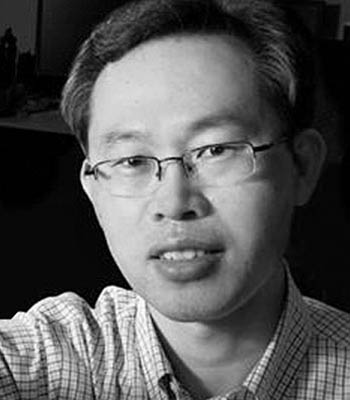
Kwang W. Oh is a Professor of Electrical Engineering and Biomedical Engineering at the University at Buffalo, State University of New York (SUNY-Buffalo), where he leads the Sensors and MicroActuators Learning Laboratory (http://SMALL.buffalo.edu). Prior to joining SUNY-Buffalo in 2006, he worked at Samsung Advanced Institute of Technology (SAIT), Samsung Electronics, Korea, where he developed micro PCR and LOC platforms for clinical diagnostics. He was exposed to the very real problems facing the life sciences and subsequently developed a keen interest in applying engineering tools to the fields of biomedical and clinical area. He has (co)authored over 130 technical publications and holds 21 US patents. In the professional fields, he has been selected as one of the prestigious Lab on a Chip's 2012 Emerging Investigators. He was the recipient of the Senior Teacher of the Year Award, SEAS for excellence in teaching, as manifested by a unique pedagogical approach of “connecting-the-dots”, and by an integration of research and education in the fields of BioMEMS and microfluidics, and wearable and implantable sensors at SUNY-Buffalo in 2017. Also, he has been (co)chaired Micro & Bio Fluidics, Lab-on-Chip at NanoTech Conference since 2012 with Dr. Edward Furlani. Currently, he is an editorial board member of Sensors, Micromachines, and Biomedical Eng. Letters; a guest editor of Special Issues: Sensors and Lab-on-a-Chip in Sensors, Biomedical Microfluidic Devices in Micromachines, and On-Chip Sensors in Sensors. He was an Industry Impact Workshop Instructor of Micro & Bio Fluidics, Lab-on-Chip at NanoTech 2017. His research program in SMALL focuses on the advancement of microfluidic tools for high-throughput/cell study applications, such as, droplet-based microfluidics, microfluidic circuits, particle/cell sorting, and cell study platform/3D model; and LOC/POC applications, such as vacuum-assisted portable platforms, hemolysis-free blood plasma separation devices and blood typing devices. Also, he invests on new microfabrication technologies and microfluidic platforms. Recent research includes the building of 3D phantom models integrated with microfluidic vascular or capillary networks to test biometric ultrasonic/photoacoustic sensors, wearable medical devices, and biomedical imaging.